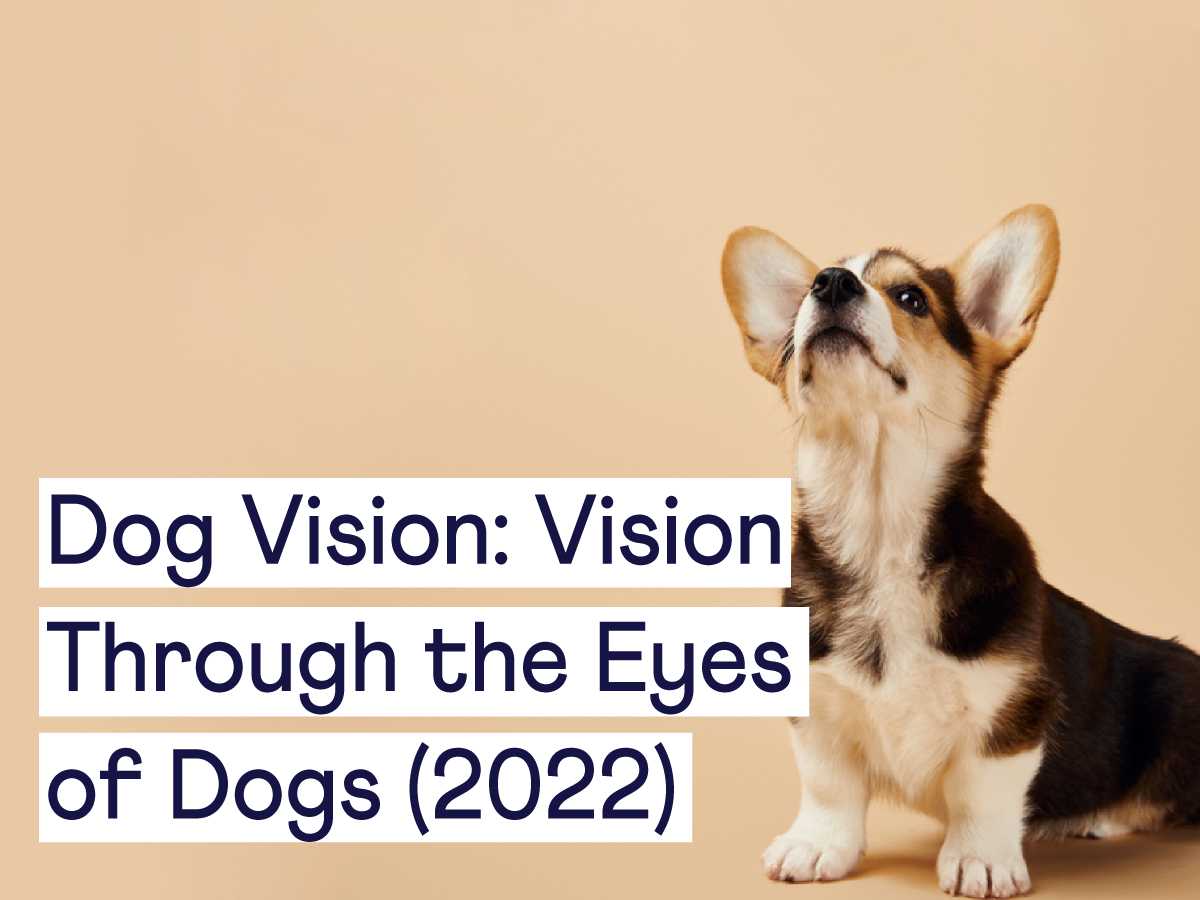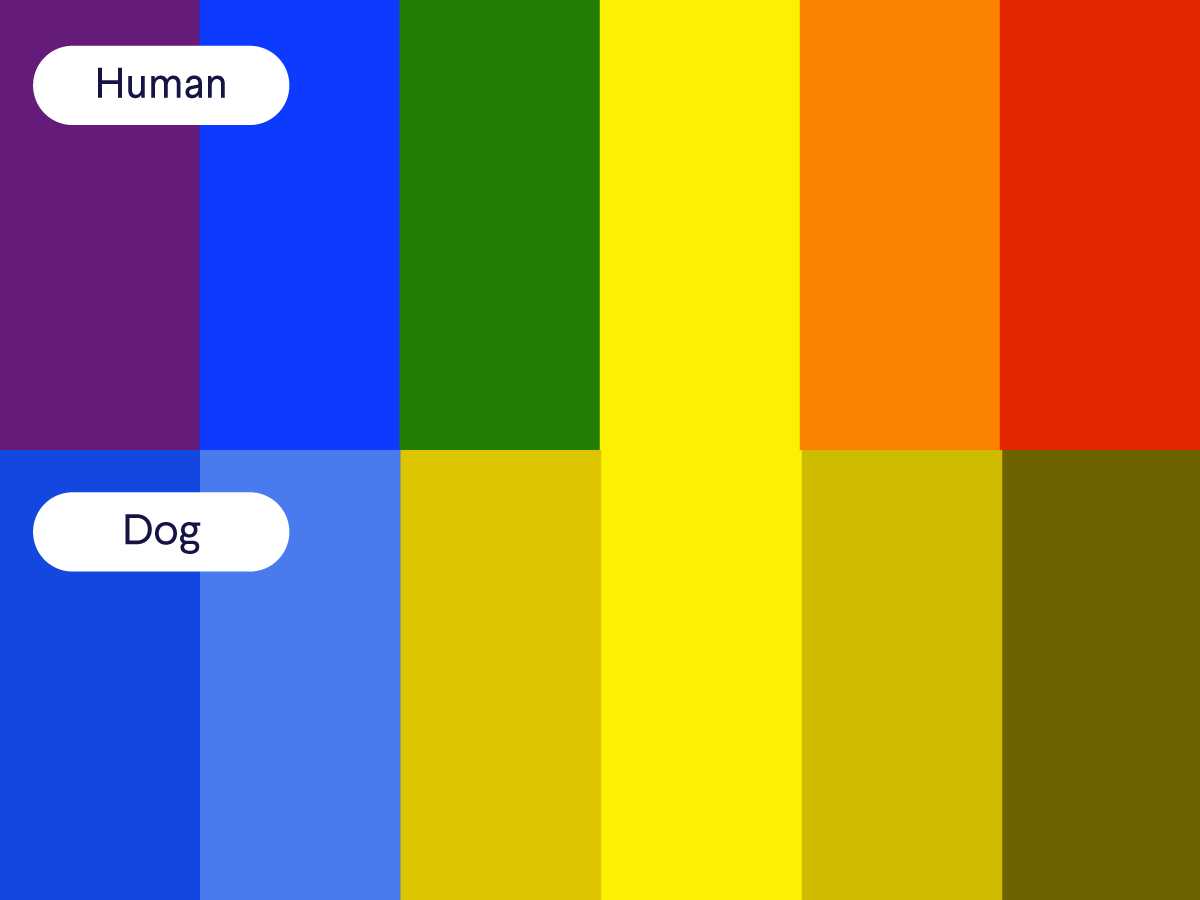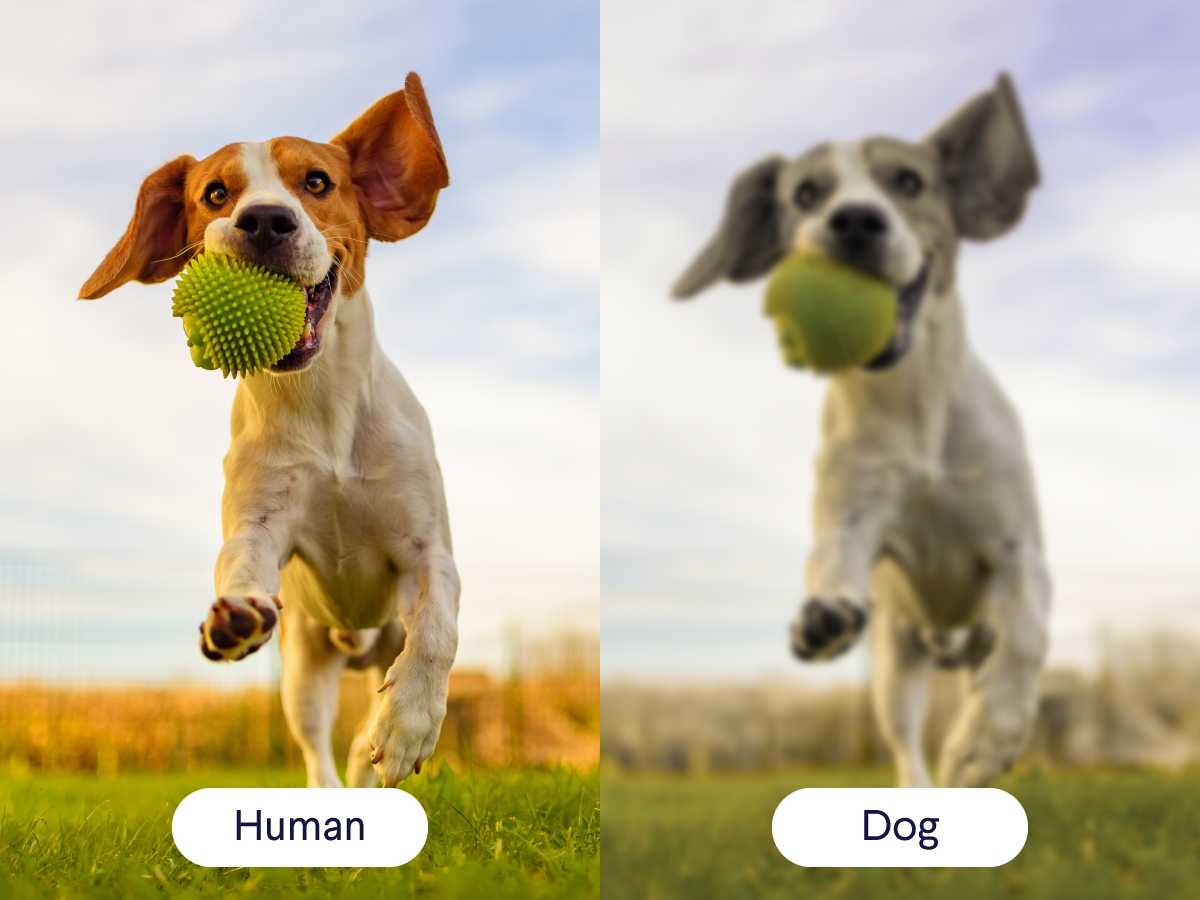
Dog Vision: Vision Through the Eyes of Dogs (2022)
Looking through the eyes of a dog, what do they see? How does a dog’s vision differ from a human’s? Read on to learn more about the unique way your dog sees the world.
Ever wonder what it would be like to view life through the eyes of a dog? Humans see the world in full color, whereas dogs are limited on the color wheel.
That said, a dog’s vision still has similarities to ours. Finn has the answers when it comes to your dog’s vision; let’s dive in!
What Is Dog Vision?
Getting down to the basics, what is vision? That’s an easy one -- it's our ability to see.
The different aspects of vision includes:
- Visual perspective - processing surroundings and information contained in visible light.
- Field of view - area that a dog’s vision spans across.
- Depth perception - breaking down the length, width, and depth of objects.
- Visual acuity - measuring how far a detail remains visible to the eye.
- Color constancy - the perception of color.
- Ability to perceive light and motion - kind of self-explanatory, no?
We are all attuned to going to the doctor and taking an eye test, hoping that our vision is 20/20.
If our doggo went, they would have a vision score of 20/75.
To put this in layman terms, a dog would need to be 20 feet away from something that a human could see from 75 feet out.
This categorizes dogs as “nearsighted”.
The Science Behind Those Puppy Eyes
The light-sensitive part of the eye is known as the retina. Located in the back of the eye, the retina contains two types of cells: cones for color and detail, and rods for motion and detecting levels of light.
> Rods
The retina’s rods allow dogs to see well at night. But don’t let this fool you — dogs have good night vision, but it’s not perfect. When the night is pitch black, dogs are just as visually impaired as we are; however if low light is introduced, it’s easy for them to detect motion, whether it is from a human, a squirrel, or anything that moves.
The tapetum is what gives off that greenish-yellow glow when light is reflected off the eyes at night. The color the tapetum actually gives off can be green, blue, orange, or yellow.
Did you know not all dogs have a tapetum, though? Dogs with blue eyes most commonly do not, giving off a red-eye appearance caused by the red blood cells at the back of their eyes.
> Cones
Color vision comes in two types: trichromatic and dichromatic.
Trichromatic refers to three cones, or three color variations, most commonly red, green, and blue. We fall into this type of color vision.
Dichromatic refers to two cones or two color variations. This applies to dogs, but it’s not 'black and white' as you may have been led to believe...
Are the Myths True? Do Dogs Only See Black and White?
There is a common assumption that dogs are colorblind and can only see black and white.
This is not an accurate statement.
Dogs have a dichromatic vision to see color, but not on the same color scale as their owners. They primarily see yellows and blue-violet colors. Red, green, orange, purple, and brown colors are not recognizable to dogs and appear grey in color.
Just because dogs can’t see all of the colors of the rainbow, they can still use light to their advantage to see different luminescent levels. They also compensate through noise and motion cues.
To stimulate your dog, choose toys that are yellow or blue in color. These will appear more interesting than other colors that are dreary and grey (yes, including those super fun bright red chew toys). These colors also help them navigate during training when tools such as weave poles, tunnels, and jumps are being utilized.
Depth Perception and Peripheral Vision
What is depth perception? Dogs use it to sense the world in three dimensions (3D) and gauge the distance between objects. Peripheral vision pertains to the ability to see out of the corner of the eye.
Take a look at your dog. Notice where the eyes are set. This placement determines a dog's depth perception and peripheral vision. Dogs' eyes, like their owners, are set close together, but there is a distinction in how dog eyes are angled.
And that slight angle makes a huge difference. Ever wonder why your dog barks at you from a short distance? It’s most likely due to their poor depth perception. Depth perception differs between breeds.
For example, breeds with a longer snout have more difficulty seeing objects in front of them. That nose of theirs actually blocks their vision. The accuracy of depth perception decreases for breeds that have wider set eyes, such as pugs.
Although depth perception may not be as great, a dog is a champion of peripheral vision. While your dog may be looking straight ahead, they can actually see 240 degrees around them. That’s impressive compared to our vision, which limits us to 180 degrees.
Dogs have a visual streak that allows them to focus on those images from the corners of their eyes. The visual streak extends the retina, a high-density line of vision cells that cross it.
What Kind of Eye Problems Can Dogs Have?
Some dogs suffer from impaired vision or blindness. This happens naturally with age, but that is not always the case. The good news is that dogs do not rely 100 percent on their vision. They have a strong sense in other departments, such as using their nose to smell and their ears to hear.
Senior dogs show more wear and tear on their eyes than puppies. They also may have underlying medical conditions that affect their eyesight, such as macular degeneration, which is common with age.
Should your dog experience reduced vision, rest assured that they can still usually live their life healthily and happily, especially if they reside in a familiar environment.
Keep them comfortable at home and keep obstacles out of their way as best you can.
How Do You Test a Dog’s Eyesight?
When we walk into a doctor’s office for an eye exam, we are expected to read numbers and letters off of a chart.
How do dogs do this when they don’t speak our language? Turns out, it’s their body language and behavior.
Dogs give off signs that we can pick up on. These include:
- Clumsiness
- Inability to locate food and water bowls
- Bumping into walls, furniture, and any other obstacles in their path
- Being easily startled or showing an uneasy behavior
- Having a lack of interest in going outside or playing
If you are concerned your dog may be experiencing problems with their vision, contact your veterinarian right away. Your vet will perform a thorough exam to determine the root cause and can recommend a treatment plan.
How Can I Keep My Dog’s Eyes Healthy?
There are a handful of foods that are scrumptious and appealing to dogs, that can also support various parts of their vision health.
Here are a few snacks you should consider and the eye-healthy nutrients they contain:
- Blueberries - Blueberries support two carotenoids in the eyes: lutein and zeaxanthin.
- Broccoli - Broccoli is another great way to fuel those carotenoids.
- Carrots - Carrots are rich in vitamins A, B, C, D, E, and K, beta carotene, and riboflavin.
- Fish - Cold-water fish like salmon and cod are high in omega-3s like EPA and DHA.
- Eggs - Egg yolk contains lutein.
- Kale - A source of lutein, zeaxanthin, and beta-carotene.
- Pumpkin - These are overflowing with carotenoids.
- Sweet potatoes - Serve as a great antioxidant and anti-inflammatory.
- Tomatoes - Tomatoes contain lycopene and lutein to help protect the eyes from sun damage.
In addition to feeding your dog a healthy diet, do your best to keep those adorable puppy eyes clean. If you see a little discharge near the eye, grab a clean cotton ball to clean the area. If they roll around in the mud, take a damp towel and gently wipe off their face.
Watch for signs of illness or injury to the eyes. Symptoms can include excessive tearing, discharge with color, lumps, bumps, redness, or swelling. If you witness any signs that your dog’s eyes are irritated, contact your veterinarian for the next steps.
Keeping Your Dog's Vision Tip-Top
Keeping your dog's eye health in tip-top shape should be one of your top priorities as a pet parent. If you want to give your pup an extra boost, supplements can help support your dog’s overall health, and a good supplement will contain vitamins that support eye health, specifically.
Visit Finn to learn more about the soft, chewy supplements that can help support your pet’s health!
Sources:
Through The Eyes Of Your Dog | PetsDoc
Can Dogs See in the Dark? | American Kennel Club
Are Dogs Color Blind? Can My Dog See Color? | American Kennel Club










Comments: